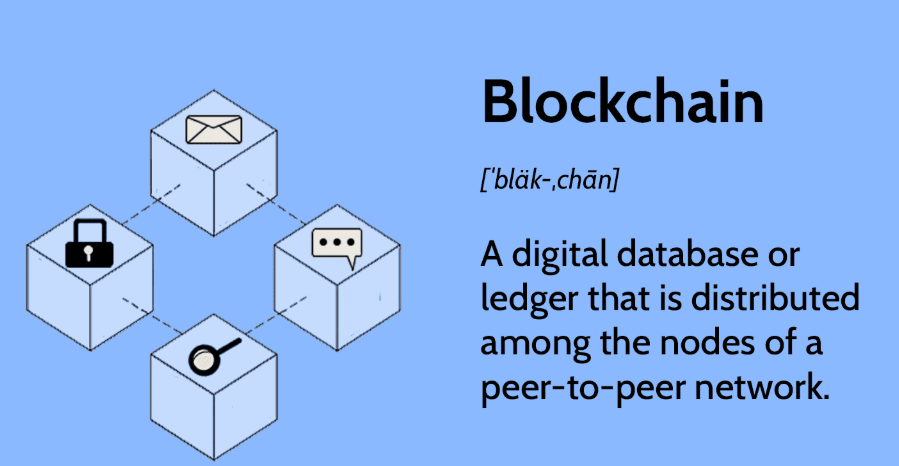Introduction to Blockchain
Imagine a world where transactions are secure, transparent, and virtually tamper-proof. Welcome to the realm of blockchain! This revolutionary technology has taken the business landscape by storm, promising to redefine how we exchange value and data. Whether you’re new to the concept or have heard whispers about cryptocurrencies, understanding blockchain is essential in today’s digital age.
But what exactly is blockchain? Why should it matter to you? In this beginner’s guide, we’ll unravel its key concepts and explore how this innovative technology works. From its numerous benefits to common misconceptions that cloud its potential, you’ll gain insights that demystify the buzz surrounding blockchain. So let’s dive in and uncover what makes this technology tick!
Key Concepts of Blockchain
At its core, blockchain is a decentralized digital ledger. It records transactions across multiple computers in such a way that the registered data cannot be altered retroactively without altering all subsequent blocks.
One fundamental concept is “blocks.” Each block contains transaction data, a timestamp, and a cryptographic hash of the previous block. This forms an unbreakable chain linking them together.
Another important term is “nodes.” These are individual computers participating in the network, validating and relaying information. The more nodes involved, the more secure and robust the system becomes.
Consensus mechanisms ensure agreement among participants about which transactions are valid. Popular methods include Proof of Work and Proof of Stake.
Smart contracts automate processes on blockchain platforms. They execute predefined actions when specified conditions are met, eliminating reliance on intermediaries for trust.
How Does Blockchain Work?
Blockchain operates as a decentralized digital ledger. Each transaction is recorded in blocks, which are linked together to form a chain.
When a new transaction occurs, it’s grouped with others into a block. This block contains data like the time of the transaction and details about the participants involved.
Once filled, this block undergoes verification through consensus among network participants. Various algorithms ensure that everyone agrees on its validity before it’s added to the existing chain.
After approval, the new block becomes part of an immutable record. It cannot be altered or deleted without altering every subsequent block—making fraud nearly impossible.
This transparency allows users to track transactions easily while maintaining privacy through cryptographic techniques. The result? A secure method for recording information across multiple platforms without relying on any single authority.
Benefits and Applications of Blockchain
Blockchain technology offers a range of benefits that extend far beyond cryptocurrency. Its decentralized nature ensures security and transparency, making it an attractive option for various industries.
In finance, blockchain streamlines transactions by eliminating intermediaries. This not only speeds up processes but also reduces costs significantly.
Supply chain management sees improved traceability as each transaction is recorded immutably on the blockchain. Companies can track products from origin to consumer, enhancing trust and accountability.
Healthcare leverages blockchain to safeguard patient records while allowing secure sharing among authorized professionals. This enhances data integrity and privacy in sensitive situations.
Even voting systems are exploring blockchain for its potential to prevent fraud and ensure fair elections. The technology provides verifiable results in real-time, fostering greater democratic participation.
From identity verification to digital rights management, the applications seem limitless as industries continue to innovate with this transformative technology.
Common Misconceptions about Blockchain
Many people view blockchain as synonymous with cryptocurrencies. While it’s true that Bitcoin and other digital currencies utilize blockchain technology, the applications extend far beyond finance.
Another misconception is that blockchain is entirely anonymous. In reality, while transactions can obscure identities, they are also traceable on public ledgers. This transparency can be a double-edged sword in terms of privacy.
Some believe that implementing blockchain guarantees security and eliminates fraud completely. However, vulnerabilities still exist within the systems built around it—like smart contracts or exchanges—that may not leverage its full potential.
Additionally, many think that blockchain is only for large enterprises. Small businesses are finding creative ways to adopt this technology too, democratizing access and fostering innovation across various sectors.
There’s a notion that once data enters a blockchain, it cannot be altered at all. While it’s true modifications are challenging due to consensus mechanisms, mistakes or updates can sometimes lead to necessary changes if agreed upon by stakeholders.
Challenges and Future of Blockchain Technology
Blockchain technology faces several hurdles that could impede its widespread adoption. Scalability remains a crucial issue. As more users join the network, transaction speeds can slow down significantly, leading to frustration.
Energy consumption is another concern. Many blockchain systems, particularly those using proof-of-work algorithms, require vast amounts of energy for mining activities. This raises questions about sustainability in an increasingly eco-conscious world.
Regulatory uncertainty poses additional challenges. Governments are still figuring out how to regulate cryptocurrencies and blockchain-based applications effectively. Clear guidelines will be essential for businesses aiming to harness this technology without legal pitfalls.
Looking ahead, innovation is key. Developers are exploring solutions like layer-2 scaling and alternative consensus mechanisms that promise faster transactions with lower energy costs. The future of blockchain hinges on overcoming these obstacles while continuing to expand its potential across various sectors.
Conclusion
Blockchain technology is transforming the way we think about data and transactions. Its decentralized nature offers a level of security and transparency that traditional systems struggle to achieve. As more industries explore its potential, understanding blockchain becomes increasingly essential.
The key concepts provide a foundation for grasping how this innovative technology operates. With various applications ranging from finance to supply chain management, blockchain stands poised to disrupt numerous sectors. However, it’s also crucial to address misconceptions that may hinder widespread adoption.
Challenges exist, particularly concerning scalability and regulation, but ongoing advancements signal a promising future. As developers continue to refine the technology and organizations embrace its capabilities, the possibilities seem limitless.
Embracing blockchain could lead us toward new ways of interacting with information and each other. Staying informed will allow individuals and businesses alike to harness its power effectively in an ever-evolving digital landscape.

